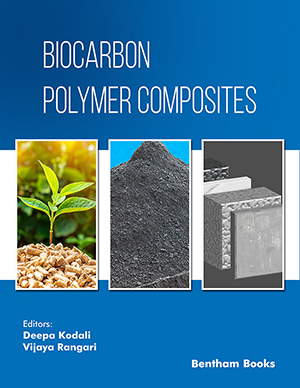
Abstract
Background: A cellulose derivative known as ethyl cellulose has gained a lot of interest because of its special qualities and prospective uses in systems for the controlled administration of medications. This study concentrates on patents that examine the use of ethyl cellulose for anticancer preparations. Polymeric drug delivery methods are gaining significant research due to their potential to enhance therapeutic effectiveness, improve bioavailability, and reduce toxicity.
Objective: The primary objective of incorporating ethyl cellulose into anticancer preparations is to develop safe, effective, and targeted therapies for the treatment of cancer. This study aims to provide a comprehensive overview of recent patents that specifically explore the use of ethyl cellulose in the prevention and treatment of different cancers.
Methods: The patent review methodology employed an extensive search across multiple patent databases to identify relevant patents on the utilization of ethyl cellulose in anticancer preparations.
Results: The formulations described in these patents demonstrated sustained and controlled drug release profiles, which resulted in improved therapeutic efficacy while minimizing potential adverse effects. Our comprehensive review revealed multiple patents that utilized ethyl cellulose as a polymer in the creation of anticancer preparations. The studies conducted in these patents showcased enhanced drug release kinetics, improved cellular uptake, and increased anticancer activity compared to conventional formulations.
Conclusion: The analysis of these patents strongly indicates that ethyl cellulose exhibits substantial potential as a versatile polymer for anticancer preparations. The findings strongly suggest that incorporating ethyl cellulose into drug delivery systems can significantly enhance the effectiveness of anticancer drugs, thus benefiting patients.
Keywords: Breast, cancer, colon, ethyl cellulose, lung, polymer, stomach, bladder.
[http://dx.doi.org/10.3390/molecules26226990] [PMID: 34834081]
[http://dx.doi.org/10.2147/DDDT.S310760] [PMID: 34012256]
[http://dx.doi.org/10.1515/polyeng-2019-0365]
[http://dx.doi.org/10.1038/s41598-017-09371-2] [PMID: 28821832]
[http://dx.doi.org/10.1088/2057-1976/aaf2a4]
[PMID: 25125977]
[http://dx.doi.org/10.3923/pjbs.2013.601.609] [PMID: 24505982]
[http://dx.doi.org/10.1016/j.jsps.2022.03.019] [PMID: 35812154]
[http://dx.doi.org/10.1155/2022/1922263]
[http://dx.doi.org/10.3390/gels9030201] [PMID: 36975650]
[http://dx.doi.org/10.4314/tjpr.v14i9.1]
[http://dx.doi.org/10.3109/14659891.2013.866176]
[http://dx.doi.org/10.2174/1567201815666180503121043] [PMID: 29732969]
[http://dx.doi.org/10.1016/j.addr.2007.11.009] [PMID: 18374448]
[http://dx.doi.org/10.1038/nrd1088] [PMID: 12750738]
[http://dx.doi.org/10.1002/polc.5070510111]
[http://dx.doi.org/10.1002/jps.2600830432] [PMID: 8046623]
[http://dx.doi.org/10.1002/jbm.820211106] [PMID: 3680316]
[http://dx.doi.org/10.1016/j.addr.2009.05.007] [PMID: 19699249]
[PMID: 2946403]
[http://dx.doi.org/10.1016/S0002-9440(10)65006-7] [PMID: 10751361]
[http://dx.doi.org/10.1073/pnas.95.8.4607] [PMID: 9539785]
[http://dx.doi.org/10.1080/10611860701539584] [PMID: 17671892]
[PMID: 7641188]
[http://dx.doi.org/10.2165/00003088-200342050-00002] [PMID: 12739982]
[http://dx.doi.org/10.1002/jps.21358] [PMID: 18351638]
[PMID: 20047152]
[http://dx.doi.org/10.1038/sj.bjc.6603855] [PMID: 17595665]
[http://dx.doi.org/10.1038/sj.bjc.6602479] [PMID: 15785749]
[http://dx.doi.org/10.1016/S0169-409X(02)00015-7] [PMID: 11897144]
[http://dx.doi.org/10.1016/j.jconrel.2006.07.012] [PMID: 16942814]
[http://dx.doi.org/10.1021/la803769q] [PMID: 19239232]
[http://dx.doi.org/10.1016/j.addr.2012.09.030] [PMID: 16305813]
[http://dx.doi.org/10.3390/polym13203455] [PMID: 34685214]
[http://dx.doi.org/10.1021/cr068212n] [PMID: 19099452]
[http://dx.doi.org/10.1042/BST0350061]
[http://dx.doi.org/10.1016/j.drudis.2010.08.006] [PMID: 20727417]
[http://dx.doi.org/10.1038/s41598-020-79834-6] [PMID: 33420131]
[http://dx.doi.org/10.7567/JJAP.56.06GG09]
[http://dx.doi.org/10.1021/nl9003865] [PMID: 19331425]
[http://dx.doi.org/10.1016/j.jddst.2020.101540]
[http://dx.doi.org/10.1007/s11095-012-0827-0] [PMID: 22833052]
[http://dx.doi.org/10.1016/j.ejpb.2016.03.025] [PMID: 27020529]
[http://dx.doi.org/10.1016/j.carbpol.2010.06.020]
[http://dx.doi.org/10.1039/b311076a]
[http://dx.doi.org/10.3390/polym13142272] [PMID: 34301030]
[PMID: 27307735]
[http://dx.doi.org/10.3390/ma12203386] [PMID: 31627271]
[http://dx.doi.org/10.3390/molecules25194497] [PMID: 33008004]
[http://dx.doi.org/10.1007/s10570-018-2062-2]
[http://dx.doi.org/10.1590/s2175-97902019000118736]
[http://dx.doi.org/10.3390/nano8010037] [PMID: 29329209]
[http://dx.doi.org/10.1021/acsami.2c11064] [PMID: 36301188]
[http://dx.doi.org/10.1016/S1470-2045(12)70472-2] [PMID: 23561747]
[http://dx.doi.org/10.2214/ajr.174.2.1740323] [PMID: 10658699]
[http://dx.doi.org/10.1016/0030-4220(86)90421-4] [PMID: 2939386]
[PMID: 26682141]
[http://dx.doi.org/10.1148/radiol.2532082021] [PMID: 19709992]
[http://dx.doi.org/10.1016/j.jhep.2005.03.033] [PMID: 16005538]
[http://dx.doi.org/10.1177/159101990401000203] [PMID: 20587223]
[http://dx.doi.org/10.1258/phleb.2009.009041] [PMID: 20870869]
[http://dx.doi.org/10.4103/2045-080X.116598]
[PMID: 32255]
[http://dx.doi.org/10.1111/j.2042-7158.1986.tb04546.x] [PMID: 2871157]
[http://dx.doi.org/10.1016/0378-5173(86)90229-2]
[http://dx.doi.org/10.1016/0378-5173(89)90013-6]
[http://dx.doi.org/10.1039/D1RA04242D] [PMID: 35479870]
[http://dx.doi.org/10.1016/j.nano.2006.11.007] [PMID: 17379170]
[http://dx.doi.org/10.1080/026520499288825] [PMID: 10499843]
[http://dx.doi.org/10.1007/s11814-008-0198-8]
[PMID: 24363714]
[http://dx.doi.org/10.1002/path.3978] [PMID: 22190257]
[http://dx.doi.org/10.7554/eLife.15691] [PMID: 27481188]
[PMID: 31531041]
[PMID: 12753729]
[http://dx.doi.org/10.1016/j.ijpharm.2012.11.022] [PMID: 23200955]
[PMID: 22615665]
[http://dx.doi.org/10.1016/S0939-6411(03)00156-5] [PMID: 14729086]
[http://dx.doi.org/10.1016/j.ijpharm.2007.07.005] [PMID: 17697758]
[http://dx.doi.org/10.1080/10408690490478091] [PMID: 16047493]
[http://dx.doi.org/10.1208/pt070374] [PMID: 17025254]
[http://dx.doi.org/10.2478/v10007-009-0023-x] [PMID: 19819829]
[http://dx.doi.org/10.37285/ijpsn.2009.2.3.6]
[http://dx.doi.org/10.3390/polym12112608] [PMID: 33171959]
[http://dx.doi.org/10.1016/j.ijpharm.2005.12.010] [PMID: 16423476]
[http://dx.doi.org/10.1007/s13402-019-00489-1] [PMID: 31900901]
[http://dx.doi.org/10.1515/9783110527872-008] [PMID: 30855109]













